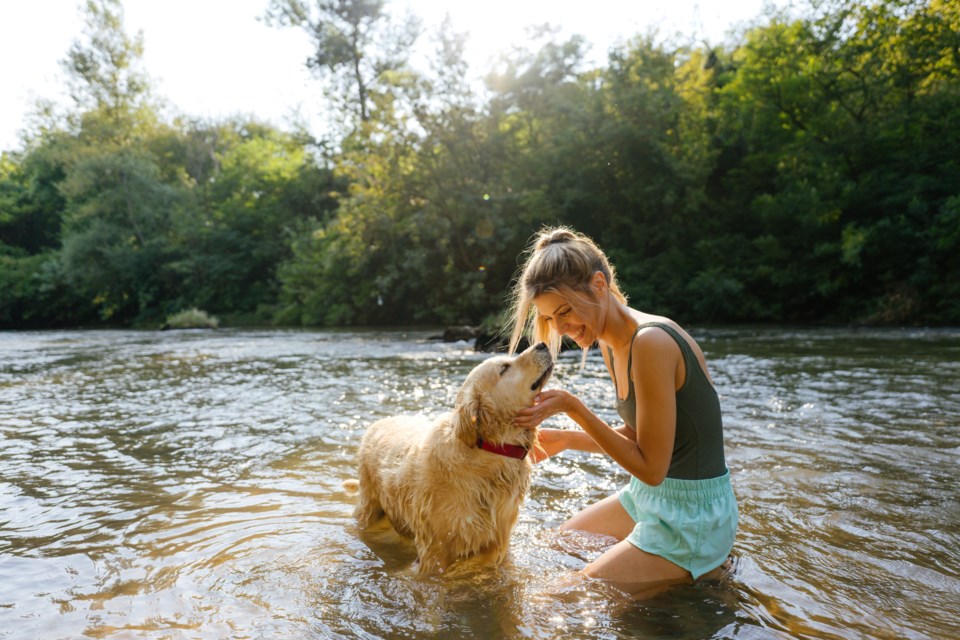Swimming can be hugely beneficial for dogs, providing a way to get exercise and stay cool in the summer heat.
“As with any activity, for both pets and people, start slow and, if your keep safety foremost in mind,” says Eyal Lichtmann, CEO of the Regional Animal Protection Society. “Swimming has so many advantages. In the summer heat, it is a great way to stay active. For pets, there are a couple of extra things to keep in mind.”
1. It’s a low-impact exercise: Swimming is easy on the joints, making it an excellent form of exercise for dogs with arthritis or other joint issues.
2. Swimming provides a full-body workout: Swimming engages many muscle groups, providing a comprehensive workout that helps build strength and endurance.
3. It’s a cooling activity: Getting enough exercise in the dog days of summer can be a challenge for all creatures. Swimming can help dogs cool down even while getting the activity they need, and prevents overheating.
4. Swimming helps with weight management: Regular swimming can help dogs maintain a healthy weight, as it burns calories and improves metabolism.
5. Mental stimulation: For dogs, walking and other exercises are not just about the physical benefits. It’s about working the brain. Swimming can be a fun and mentally stimulating activity for dogs, especially when combined with fetching or other water games.
6. Improve cardiovascular health: The cardiovascular workout from swimming can help improve heart and lung function in dogs.
7. Therapeutic benefits: For dogs recovering from surgery or injury, swimming can be part of a rehabilitation program to aid in recovery and improve mobility. Always ask your veterinarian!
Water (or any unfamiliar environment) holds hazards. Always supervise your dog while they are swimming. Some dogs are natural swimmers, and others may need a life vest for extra buoyancy or should be kept close to the shore. Introduce your dog to water gradually to water if they are not familiar with swimming. Go at their pace to build their confidence.
Make sure the water is clean and free of harmful bacteria or chemicals. Avoid letting your dog swim in stagnant water or water with blue-green algae, which can be toxic.
Rinse your dog off after swimming to remove chlorine, salt or other harmful substances. Dry their ears thoroughly to prevent infections.
With proper precautions, swimming can be a great way to keep your dog active in summer.



